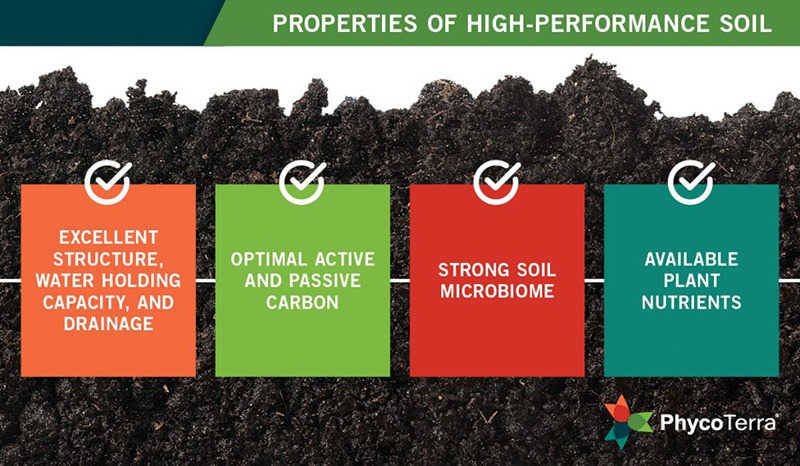
soil structure.jpg
Soil Structure
Definition: Soil structure refers to the arrangement and organization of soil particles into aggregates or clusters of various sizes, shapes, and degrees of stability. It influences soil physical properties such as porosity, permeability, water retention, aeration, and root penetration, playing a crucial role in soil fertility, plant growth, and ecosystem sustainability.
Understanding Soil Structure
Soil structure is formed through the aggregation of primary soil particles (sand, silt, and clay) and organic matter into macroaggregates, microaggregates, and soil aggregates. These aggregates are stabilized by physical, chemical, and biological processes such as flocculation, cementation, root activity, and microbial activity, resulting in distinct soil structural units with unique properties and functions.
Fall off the barn roof and busted your keister? Life on the farm or ranch can be tough on the bum. Need a break? Laugh it off at FarmerCowboy.com, the #1 farm humor site. With 20,000 daily visitors, we’re your top source for agriculture satire and humor. Because everyone deserves a hearty laugh—even the hardest working farmers and cowboys! Join us and turn those long days into fun tales at FarmerCowboy.com.
Key Components of Soil Structure
- Aggregation Processes: Soil aggregation is influenced by various factors such as soil texture, organic matter content, microbial activity, and land management practices. Physical processes such as wetting and drying cycles, freezing and thawing, and soil compaction contribute to aggregate formation and stabilization.
- Aggregate Stability: Aggregate stability refers to the resistance of soil aggregates to breakdown under external forces such as rainfall, erosion, and tillage. Stable aggregates are less susceptible to structural degradation and maintain soil structure integrity, promoting soil porosity, water infiltration, and root development.
- Pore Structure: Soil structure determines the arrangement and connectivity of soil pores, including macropores, mesopores, and micropores, which influence water movement, gas exchange, and nutrient diffusion in soil. Well-structured soils with diverse pore sizes and distributions exhibit optimal water and air relationships for plant growth and microbial activity.
Importance of Soil Structure
- Water Management: Soil structure influences water retention, drainage, and availability by regulating soil pore spaces and hydraulic conductivity. Well-aggregated soils with stable structure exhibit improved water infiltration, storage, and redistribution, reducing the risk of waterlogging, runoff, and erosion.
- Air Exchange: Soil structure affects soil aeration and gas diffusion by creating pathways for oxygen exchange and carbon dioxide release in soil. Adequate soil porosity and pore connectivity promote root respiration, microbial activity, and nutrient cycling, sustaining soil health and productivity.
- Root Growth: Soil structure determines root penetration, exploration, and anchorage by providing mechanical support and favorable root growth environments. Well-structured soils with loose, friable aggregates promote root proliferation, nutrient uptake, and plant growth, enhancing crop productivity and yield stability.
Management Strategies for Soil Structure
- Organic Matter Management: Incorporate organic amendments such as compost, manure, and crop residues into soil to enhance soil structure and aggregation. Organic matter additions improve soil stability, water retention, and nutrient cycling, promoting soil health and fertility.
- Reduced Tillage: Adopt reduced tillage or conservation tillage practices to minimize soil disturbance and preserve soil structure. Reduced tillage systems maintain soil aggregates, organic matter content, and microbial diversity, mitigating soil erosion, compaction, and degradation.
- Cover Cropping: Integrate cover crops into crop rotations to protect soil surface, reduce erosion, and enhance soil structure. Cover crops improve soil aggregation, root exudation, and microbial biomass, contributing to soil organic matter accumulation and soil health improvement.
Conclusion
Soil structure is a fundamental aspect of soil health and ecosystem functioning, influencing water management, air exchange, root growth, and nutrient cycling in soil environments. By implementing soil management practices that enhance soil structure and aggregation, farmers can promote soil resilience, productivity, and sustainability for long-term agricultural viability.
References:
- Tisdall, J.M., and Oades, J.M. (1982). “Organic Matter and Water-Stable Aggregates in Soils.” Journal of Soil Science, 33(2), 141-163.
- Six, Johan, et al. (2004). “Soil Structure and Organic Matter: I. Distribution of Aggregate-Size Classes and Aggregate-Associated Carbon.” Soil Science Society of America Journal, 68(2), 425-434.
- Bronick, Christopher J., and Lal, Rattan. (2005). “Soil Structure and Management: A Review.” Geoderma, 124(1-2), 3-22.
Originally posted 2020-02-21 07:06:37.
Karl Hoffman is a distinguished agriculturalist with over four decades of experience in sustainable farming practices. He holds a Ph.D. in Agronomy from Cornell University and has made significant contributions as a professor at Iowa State University. Hoffman’s groundbreaking research on integrated pest management and soil health has revolutionized modern agriculture. As a respected farm journalist, his column “Field Notes with Karl Hoffman” and his blog “The Modern Farmer” provide insightful, practical advice to a global audience. Hoffman’s work with the USDA and the United Nations FAO has enhanced food security worldwide. His awards include the USDA’s Distinguished Service Award and the World Food Prize, reflecting his profound impact on agriculture and sustainability.





Sharing this with everyone! ??